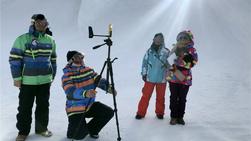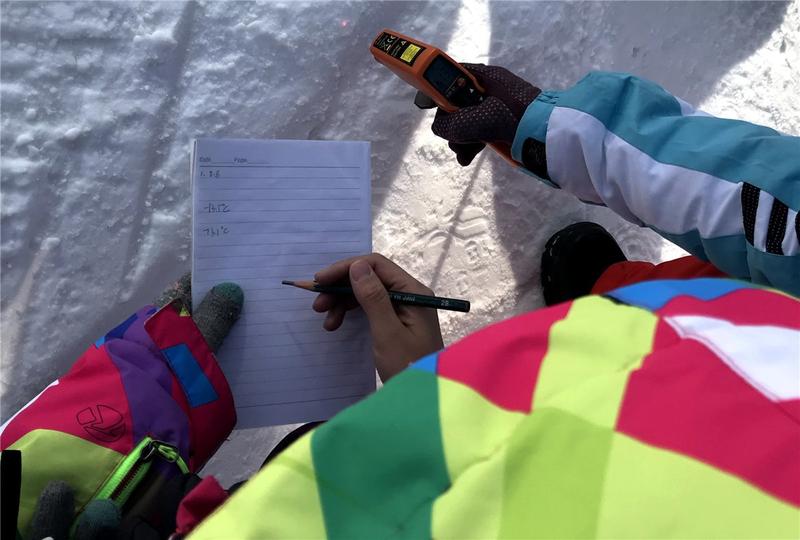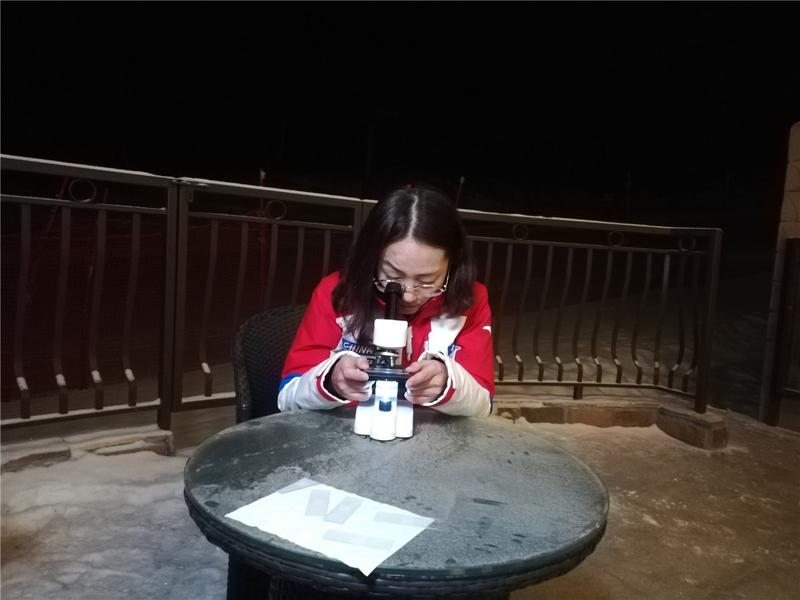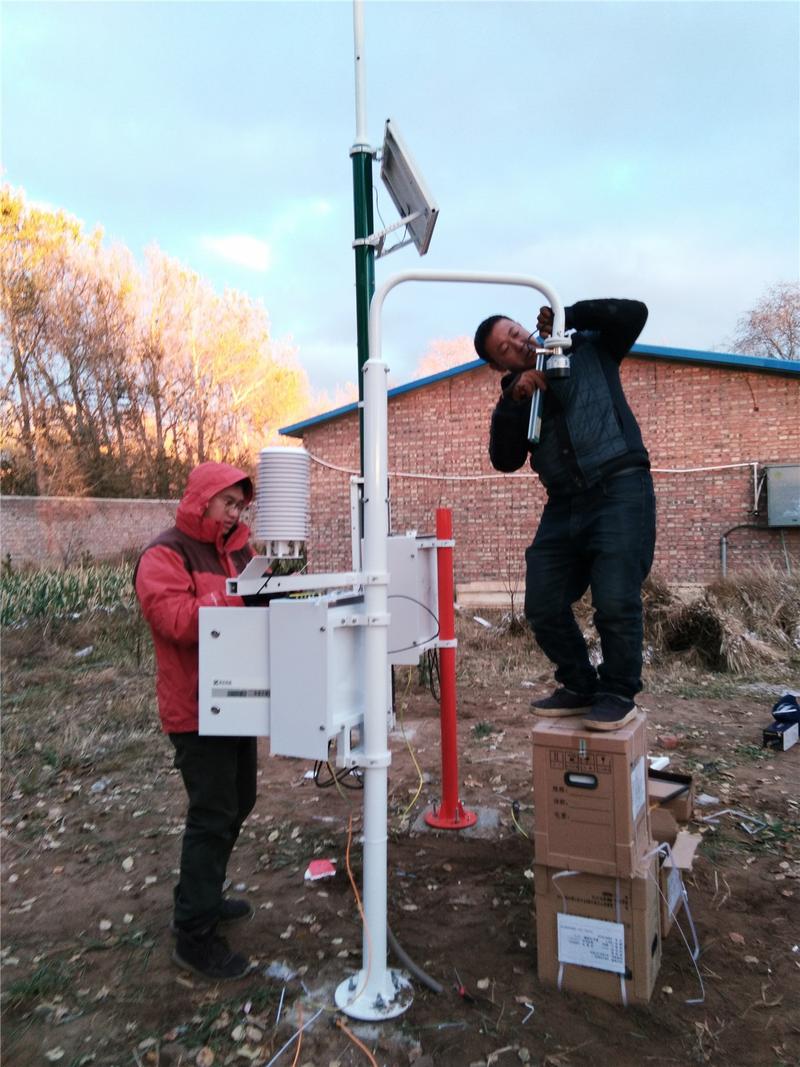A 36-strong team is training to provide coaches and athletes with unparalleled climate information at the 2022 Games. Li Hongyang reports.
 Members of the 2022 forecasting team use portable equipment to assess weather conditions in Zhangjiakou, Hebei province, in January, 2020. (PHOTO BY WU LIRONG / FOR CHINA DAILY)
Members of the 2022 forecasting team use portable equipment to assess weather conditions in Zhangjiakou, Hebei province, in January, 2020. (PHOTO BY WU LIRONG / FOR CHINA DAILY)
When the 2022 Winter Olympic Games begin, Beijing will become the first city to host both the summer and winter competitions.
The 2015 announcement that the Chinese capital and Zhangjiakou, in neighboring Hebei province, had been awarded the event presented many new challenges to the organizing team.
ALSO READ: Beijing to ensure Olympics projects completed on schedule
That was especially true for those responsible for providing weather forecasts in the mountains, where conditions are notoriously difficult to predict.
The weather will be a critical element in snow-based events, as major factors such as wind and temperature can sometimes dictate whether a competition will be delayed, postponed or even canceled
The weather will be a critical element in snow-based events, as major factors such as wind and temperature can sometimes dictate whether a competition will be delayed, postponed or even canceled.
In December 2017, Li Zongtao, a weather forecaster from Shijiazhuang, Hebei's capital, joined a training program held every winter in Zhangjiakou, northwest of Beijing, to prepare for the 2022 Games.
Zhangjiakou will host most of the snow-based competitions, including snowboarding, cross-country skiing and ski jumping, while other events will be held in central Beijing and the suburb of Yanqing.
The day he and 16 other forecasters arrived in Zhangjiakou, Li put on a pair of skis for the first time and took part in a training session. The then-33-year-old hadn't expected skiing to be an important skill for a Winter Games forecaster.
Zhangjiakou will host most of the snow-based competitions, including snowboarding, cross-country skiing and ski jumping, while other events will be held in central Beijing and the suburb of Yanqing.
As the training progressed, Li discovered other things he would need to study, such as the unfamiliar weather patterns in the mountains. He also realized that he would have to improve his English skills.
"Training in all these skills is aimed at improving the accuracy of our forecasts day by day and guaranteeing a good service in 2022," he said.
 Forecasters make notes while testing snow-covered paths in January, 2020. (PHOTO BY WU LIRONG / FOR CHINA DAILY)
Forecasters make notes while testing snow-covered paths in January, 2020. (PHOTO BY WU LIRONG / FOR CHINA DAILY)
In 2018, more forecasters joined the team, bringing the number of members to 36. The forecasters, who had an average age of 33 and had been recruited from meteorological services nationwide, were the standout performers during the selection process.
Variable conditions
As 2022 will be the first time China has hosted a Winter Olympics, it will also be the first time for Li and his colleagues to take part in such a high-profile event.
Weather systems in the mountains are more complicated than those on the plains, varying at different heights and times.
"Before, we were forecasters for cities and knew little about weather patterns in the mountains, so we were not skilled and had little experience," Li said.
Initially, the trainees made basic mistakes. For example, Dong Quan, a deputy chief forecaster who had worked at the National Meteorological Center in Beijing, incorrectly predicted the depth of snow on a mountain, citing 0.1 millimeters when it was actually about 3 mm.
"It was upsetting that my prediction was so far from the real depth. Though I know forecasters can't provide reports that are 100 percent accurate, there is still pressure on me when I get a forecast wrong," he said.
To counter the lack of forecasting experience and historical weather data, the local meteorological service has installed 36 monitoring stations several hundred meters apart to provide real-time updates in the main areas of activity.
Moreover, to obtain more accurate and intuitive understanding of conditions, the forecasters use portable devices to collect data such as wind speed and direction, temperatures and relative moisture. They go onto the mountains every two days, with each team member spending about an hour outside in temperatures as low as -10 C.
Forecaster Fan Junhong started learning to ski in January, and has progressed quickly enough to ski down the hill unaided now.
"It is convenient to use skis to collect data and experience the weather on the pistes and runs," the 51-year-old said.
 Liu Huayue uses a microscope to observe snowflakes. (PHOTO BY WAG LIANG / FOR CHINA DAILY)
Liu Huayue uses a microscope to observe snowflakes. (PHOTO BY WAG LIANG / FOR CHINA DAILY)
Li said it is necessary to monitor and note all the weather factors, because each of them can make a major difference during competitions. The quality of snow and the wind direction can affect the athletes' performances, while temperatures and wind speeds may pose safety risks.
"For example, ski jumpers depend heavily on the wind to keep their bodies stable and help them go faster. If the wind speed exceeds 3 meters per second, these athletes will be affected. Head winds can help lift jumpers, which is what they want, while tail winds can put them under pressure and disturb their performance," he said.
The Winter Games is more demanding in terms of weather than its summer counterpart, and requires a more-targeted service, such as precise information about snow depths.
To obtain such information, the forecasters stay at a chalet on the mountain after they have predicted the snowfall. Usually, four work as a team to collect and analyze snowfall data, with one person working outside each hour until the snow stops.
If it snows at night, they concentrate on their work and don't sleep.
The forecasters collect snowflakes and analyze their appearance to gain a better understanding of snow depths, which affect competitions, and offer advice that aids maintenance of the runs.
Liu Huayue spent the night of Jan 5 assessing snowflakes through a microscope to garner clues about the likely snow depth the next day.
"If the snowflakes have obvious hexagonal branches it means the particles are large, so the snow will be deep. Even during the same snowfall, depths may differ due to the different shape of the snowflakes. During the Winter Olympics, if the snow exceeds a certain depth, some events such as cross-country skiing may be delayed or even canceled," the 30-year-old said.
Briefings
After the daily assessment work has been concluded, the forecasters will attend meetings to brief the coaches of foreign sports teams in English, which will also be a new experience for them.
Having worked at the FIS Freestyle Ski Aerials World Cup in 2017, Li, the forecaster from Shijiazhuang, has more experience of these meetings than his colleagues.
"Then, I felt quite nervous about answering questions because of my poor spoken English at the time," he said, adding that the briefings will be the most difficult aspect of the team's work this time around. He and his colleagues will endeavor to deepen mutual trust and convince the coaches of the accuracy of the forecasts.
"One coach (in 2017) questioned me about whether our forecast was correct and accurate, but always used a joking tone. I quickly realized that although it was important to practice English, it was more important to provide accurate reports. Language is just a tool," Li said.
 Technicians install a device to measure snow depths in 2018. (PHOTO BY ZHANG YAJUN / FOR CHINA DAILY)
Technicians install a device to measure snow depths in 2018. (PHOTO BY ZHANG YAJUN / FOR CHINA DAILY)
In January, he was excited to receive a compliment from a foreign supervisor of a ski run. "At the beginning, some coaches would only use their own country's apps, such as Snow-Forecast. Now, they choose our prediction product, which illustrates their trust and confidence in us," he said.
Voice of experience
The Zhangjiakou weather team is scheduled to meet with forecasters from Pyeongchang, South Korea, which hosted the 2018 Winter Games. The Korean forecasters will pass on their experience of working at the event.
"Pyeongchang did a good job of forecasting the weather at their Winter Olympics. Their forecasters have even published a book about their work. We need to learn from Pyeongchang to improve our efforts," Li said.
READ MORE: Getting ready to go
He noted that his team's goal is to update forecasts every few minutes, adding that its work will not only prove useful to the Olympic athletes, but also to people across large parts of China.
"Plateaus account for about half of China's land, and those places lack accurate forecasting teams and technology. After gaining experience of forecasting for complex terrains, we will be able to provide people in mountainous areas with better basic weather services in the future," he said.


